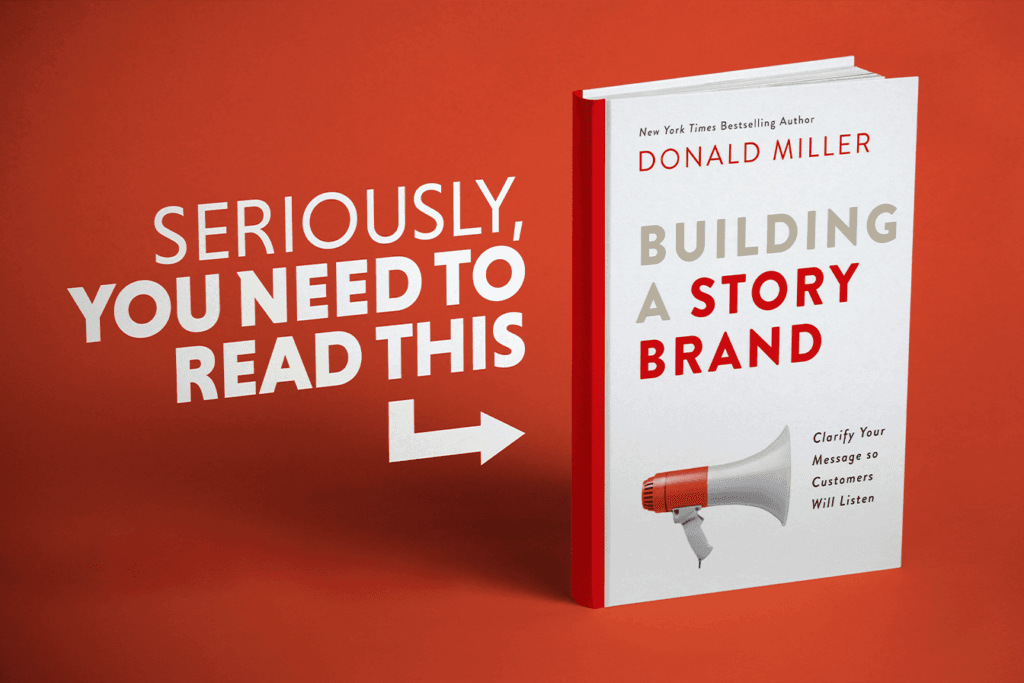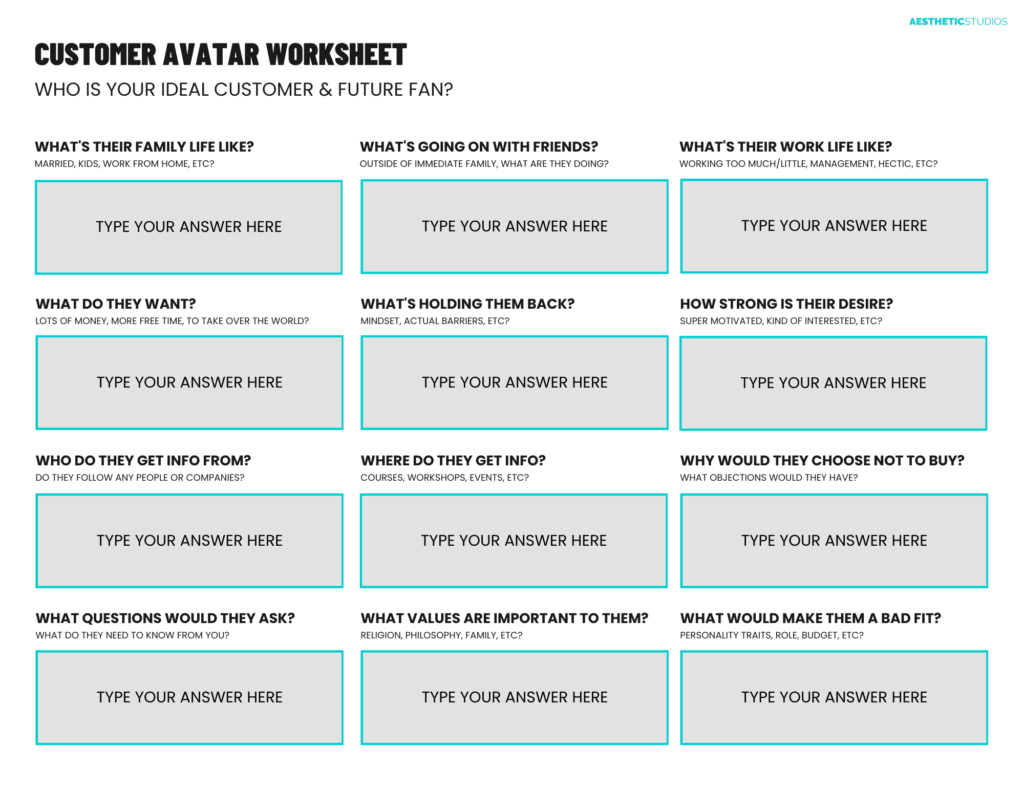Has Donald Miller Discovered the Ultimate Secret to Marketing?
In Building a StoryBrand: Clarify Your Message So Customers Will Listen, Miller makes a strong case that he has. More than just another marketing book, this guide offers a revolutionary approach to creating messages that rise above the noise and resonate deeply with your audience.
By focusing on storytelling, Miller’s framework helps you craft marketing messages that truly connect. This blog explores why his ideas are so impactful and provides actionable steps to implement the StoryBrand system to transform your marketing..
What You’ll Discover in This Article:

What’s the Big Idea?
At the heart of Building a StoryBrand is a simple yet transformative concept: your customers are the heroes of the story – not your brand. Drawing from the timeless narrative structure of the hero’s journey, Donald Miller suggests that businesses should position themselves as guides, supporting customers in overcoming challenges and achieving their goals.
This isn’t just a clever shift in perspective – it’s a game-changer. Stories are inherently engaging, and this approach taps into our natural affinity for narratives. By adopting this framework, your marketing becomes more relatable, memorable, and impactful.
What It Means
It means rewriting the traditional marketing playbook. Instead of centering your message around your brand’s features or achievements, you focus on your customers’ needs, desires, and obstacles. Your marketing should clearly show how your product or service helps them solve their problems or become the best version of themselves.
Why It’s Important
This approach creates a deeper emotional connection with your audience. By framing your customer as the hero and your brand as the guide, you foster trust and empathy. People want to feel understood – not just marketed to. When your message resonates on a personal level, it inspires loyalty and engagement, turning casual buyers into lifelong fans.
How to Implement Storybrand Framework
Implementing Donald Miller’s StoryBrand framework requires understanding and applying its four key steps. Each step is designed to clarify your message and connect with your customers on a deeper level. Let’s break it down:
🚨FREE WORKSHEET ALERT: click the image to access the PDF and edit directly.

1. Identify the Hero: Understand Who Your Customers Are
Your customer is the hero of the story, and understanding them goes far beyond surface-level details like age or location. It’s about stepping into their shoes – grasping their goals, challenges, and the barriers standing in their way.
What Does This Mean?
To connect with your audience, you need to deeply explore their lives. Consider their daily struggles, long-term aspirations, and the emotional and practical obstacles they face. When you see the world from their perspective, your messaging becomes more relatable and impactful.
Why Is This Important?
Understanding your customers on this level allows you to create messages that truly resonate. When people feel that you understand their specific challenges, they’re more likely to trust you and engage with your brand. This tailored approach increases the relevance of your communications and enhances your ability to connect.
How Do You Do It?
- Talk to Your Customers: Conduct interviews or surveys to gain direct insights into their needs, frustrations, and desires. Regular engagement helps you stay in tune with what matters to them.
- Create Buyer Personas: Build detailed profiles of your typical customers, including their demographics, interests, and motivations. These personas serve as a reference point for crafting targeted messaging.
- Map Their Pain Points and Aspirations: Clearly outline the obstacles your customers face and what they hope to achieve. This map guides your messaging to align with their journey.
2. Outline the Journey: Define the Path Your Customers Must Take
Once you understand your customer as the hero, the next step is to map out their journey – a clear, step-by-step pathway that guides them from their challenges to success. This journey reflects how your brand helps them overcome obstacles and achieve their goals.
What Does This Mean?
Think of the journey as a roadmap that starts with the customer’s current problem and ends with their desired solution. Each step represents a stage in their relationship with your brand, showing how you guide them toward success.
Why Is This Important?
A defined journey makes it easier for customers to visualise how engaging with your brand can help them. By setting clear expectations and highlighting what’s involved, you reduce uncertainty and build trust. When people see a clear path forward, they’re more likely to take the next step.
How Do You Do It?
- Break Down the Journey into Stages: Map out key milestones, such as awareness, consideration, decision, and advocacy. At each stage, identify what your customer is thinking, feeling, and needing.
- Highlight Key Touchpoints: Determine where your brand can have the greatest impact. Whether it’s through an informative blog during the awareness stage or an in-depth demo during the decision stage, ensure your interventions align with the customer’s needs at that moment.
By clearly outlining the customer’s journey, you give them a structured path to follow, making their experience with your brand seamless and reassuring.
3. Position Your Brand as the Guide: Show Customers You’re Here to Help
In every great story, the hero doesn’t succeed alone – they have a trusted guide. That’s the role your brand should play: empowering your customers with the tools and expertise they need to overcome their challenges and achieve their goals.
What Does This Mean?
Instead of focusing on your brand’s accomplishments or features, shift the narrative to show how your products or services enable your customers’ success. Your value lies in how you help them, not in being the center of attention.
Why Is This Important?
Positioning your brand as a guide builds trust and credibility. It shows your commitment to the customer’s success, creating a relationship that’s based on support rather than a hard sell. This approach fosters long-term loyalty and makes your message more relatable and effective.
How Do You Do It?
- Showcase Your Expertise: Highlight stories of success with testimonials, case studies, and tangible results. Let your satisfied customers speak to your ability to guide others.
- Educate Your Customers: Provide resources like blogs, webinars, or guides that empower your audience to tackle their problems. Sharing actionable knowledge not only helps them but also positions you as a reliable expert.
By positioning your brand as a trusted guide, you build meaningful connections with your audience and become a critical part of their journey to success.
4. Clarify Your Message: Keep It Simple and Impactful
A strong message is clear, direct, and focused on your customer’s journey. When your messaging aligns with the hero’s story, it becomes easy for your audience to understand how you can help them achieve their goals.
What Does This Mean?
Clarifying your message involves stripping away unnecessary jargon, buzzwords, or overly complex explanations. Instead, focus on crafting a narrative that is simple, engaging, and directly tied to your customer’s journey.
Why Is This Important?
When your message is straightforward, it eliminates confusion and makes it easier for customers to connect with your brand. A clear message allows your audience to quickly understand the value you bring, building trust and encouraging them to take the next step with confidence.
How Do You Do It?
- Refine Your Core Message: Work on your messaging until it is concise, memorable, and emotionally resonant. Tie it directly to the hero’s journey, showing how your brand empowers customers to succeed.
- Ensure Consistency: Apply this simplified message across all platforms – your website, social media, advertisements, and even internal communications. A unified message strengthens your brand’s identity and reinforces its value at every touchpoint.
By clarifying your message, you make it easier for customers to see how your brand fits into their story, creating a stronger and more lasting connection.
How Do I Implement StoryBrand Framework?
Successfully implementing Donald Miller’s StoryBrand framework can transform how your brand connects with and converts customers. Here’s a step-by-step guide to applying this powerful system in your marketing:
Step 1. Create a BrandScript
A BrandScript is the foundation of your StoryBrand strategy. It ensures your messaging is clear, targeted, and aligned with the customer’s journey.
- Gather Key Information: Start by identifying your customer’s primary problems, your unique solutions, and the success they’ll achieve by working with you.
- Follow the StoryBrand Structure: Use the 7-part framework to map out your BrandScript. Define the hero (your customer), their problem, your role as their guide, the plan you offer, the call to action, the failures they’ll avoid, and the successes they’ll achieve.
- Draft the Script: Craft a narrative that highlights how your brand guides customers to success. Ensure the focus remains on the customer’s story, not your brand’s achievements.
- Refine and Edit: Revisit your script to ensure it’s concise, impactful, and emotionally resonant. Your message should leave no doubt about how your brand empowers customers to overcome challenges and achieve their goals.
Step 2. Use a One-Liner
A one-liner is your elevator pitch – a concise, memorable statement that captures the essence of what your brand offers and why it matters. It’s a powerful way to communicate your value clearly and instantly.
How to create an effective one-line:
1. Identify Key Elements: Start with your BrandScript. Pull out the three critical components:
- The customer’s problem.
- Your solution.
- The success they’ll achieve with your help.
2. Draft the One-Liner: Combine these elements into a single, impactful sentence. Make it catchy yet meaningful, so it resonates with your audience. For example: “We help busy professionals save time by delivering healthy, ready-to-eat meals right to their door.”
3. Refine for Impact: Edit your one-liner to ensure it’s easy to remember and fully encapsulates the customer’s journey. Aim for simplicity without losing emotional depth.
4. Ensure Internal Alignment: Share the final one-liner with your team and incorporate it into all aspects of your communications. From your website to sales pitches, this single statement should consistently convey your message.
Step 3. Wireframe Your Website
Your website should be a seamless guide for visitors, leading them from their first interaction to conversion. A well-thought-out wireframe reflects the journey outlined in your BrandScript, ensuring every element supports your message and goals.
How to Create a StoryBrand-Aligned Wireframe:
- Outline the Layout:
Start with a simple sketch of your website’s structure. Place the most important elements – like your one-liner and key call-to-action (CTA) – prominently on the homepage. Ensure your layout prioritises clarity and guides visitors naturally. - Define the User Path:
Plan the journey visitors will take. From the moment they land on your site, map out how they’ll progress through key sections (e.g., information about your solution, testimonials, and CTAs) toward your desired outcome, such as a purchase or sign-up. - Incorporate Key Messaging:
Use the language and structure of your BrandScript across every page. Highlight the customer’s problem, your solution, and the transformation they’ll experience by engaging with your brand. Consistency in messaging is key. - Optimise for Conversion:
Strategically place clear, compelling CTAs at points where visitors are ready to act. For example, include “Get Started” or “Learn More” buttons in visible sections to encourage engagement and drive conversions.
Pro Tip:
Ensure your wireframe is user-friendly and visually appealing. Simplicity is powerful—too much clutter can dilute your message. A clean, well-organised design keeps visitors focused on their journey.
Step 4. Audit and Align All Marketing Materials
After aligning your core message and website with the StoryBrand framework, it’s time to ensure the same clarity extends to every piece of your marketing. Consistency across all materials reinforces your brand message and ensures your customers experience a unified story at every touchpoint.
How to Audit and Align Your Marketing Materials:
- Review Existing Materials:
Take stock of all your current marketing assets – brochures, social media posts, email campaigns, advertisements, and more. Evaluate whether they align with your BrandScript. Do they clearly present the customer as the hero and your brand as the guide? - Update Where Necessary:
Identify materials that lack clarity, focus too much on your brand, or use inconsistent messaging. Rewrite or redesign these pieces to reflect the StoryBrand framework, ensuring they communicate the same clear, customer-focused message as your website. - Train Your Team:
A consistent brand story requires everyone to be on the same page. Host training sessions to help your team understand the principles of the StoryBrand framework and how to apply them in daily interactions, presentations, and customer communications. When everyone communicates with clarity and purpose, your brand message becomes even stronger.
Pro Tip:
Set up a checklist or style guide based on your BrandScript to ensure every future marketing material—whether created by you or an agency – stays true to your message.
So, Why Did I Read This?
Donald Miller’s Building a StoryBrand isn’t just another marketing book – it’s a transformative guide to redefining how you connect with your audience. By positioning your customer as the hero and your brand as the guide, you unlock a proven framework for clarifying your message, building trust, and driving meaningful engagement.
Whether you’re an entrepreneur, marketer, or business owner, the StoryBrand framework offers a powerful blueprint to elevate your brand’s communication. By embracing storytelling and applying these principles, you can cut through the noise, attract the right customers, and turn your business into a narrative-driven powerhouse. Admire Donald’s work here.
Chat to us about implementing this system for you, more affordably than others can and quicker than you.
Creating a StoryBrand Framework Landing Page on Your Own? Steal Our Template!

If the thought of setting up your own landing page seems daunting, fear not. We’ve developed a comprehensive, step-by-step template specifically designed to guide you through the process of creating a landing page that adheres to the principles of Donald Miller’s StoryBrand framework. This template ensures that every element of your landing page, from the headline to the call to action, is crafted to clearly communicate your message and engage your visitors effectively.
For a detailed, easy-to-follow blueprint that aligns with the StoryBrand approach, simply click this link for a step-by-step walkthrough on how to structure your StoryBrand framework landing page. This resource is perfect for both seasoned marketers and those new to the concept, empowering you to create a compelling landing page that resonates deeply with your audience and drives your desired outcomes.
Instant Donald Miller Offer: Miller GPT Bot
It wouldn’t be an Aesthetic blog without an irresistible offer! Let’s trade information.
We’ve created the Donald Miller “StoryBrand Bot” – an AI tool designed to help you craft persuasive brand messages effortlessly. Sign up below for unlimited access to a tailored ChatGPT experience, built specifically to assist you in:
- Designing compelling narratives that captivate your audience.
- Crafting “StoryBrand Offers” with clear value propositions and exclusive benefits.
- Addressing your ideal customer’s challenges with targeted solutions.
The bot ensures your messaging is clear, concise, and strategically designed to resonate with your audience. With its help, you’ll create offers that are highly effective, emotionally engaging, and perfectly aligned with the StoryBrand framework.
Ready to elevate your brand messaging? Sign up now to get started!
Get the Donald Bot
Signup to our email list to access to our custom Donald Miller Inspired Donald Bot.
Access Granted ✨
Click this link to access the Donald Bot.




